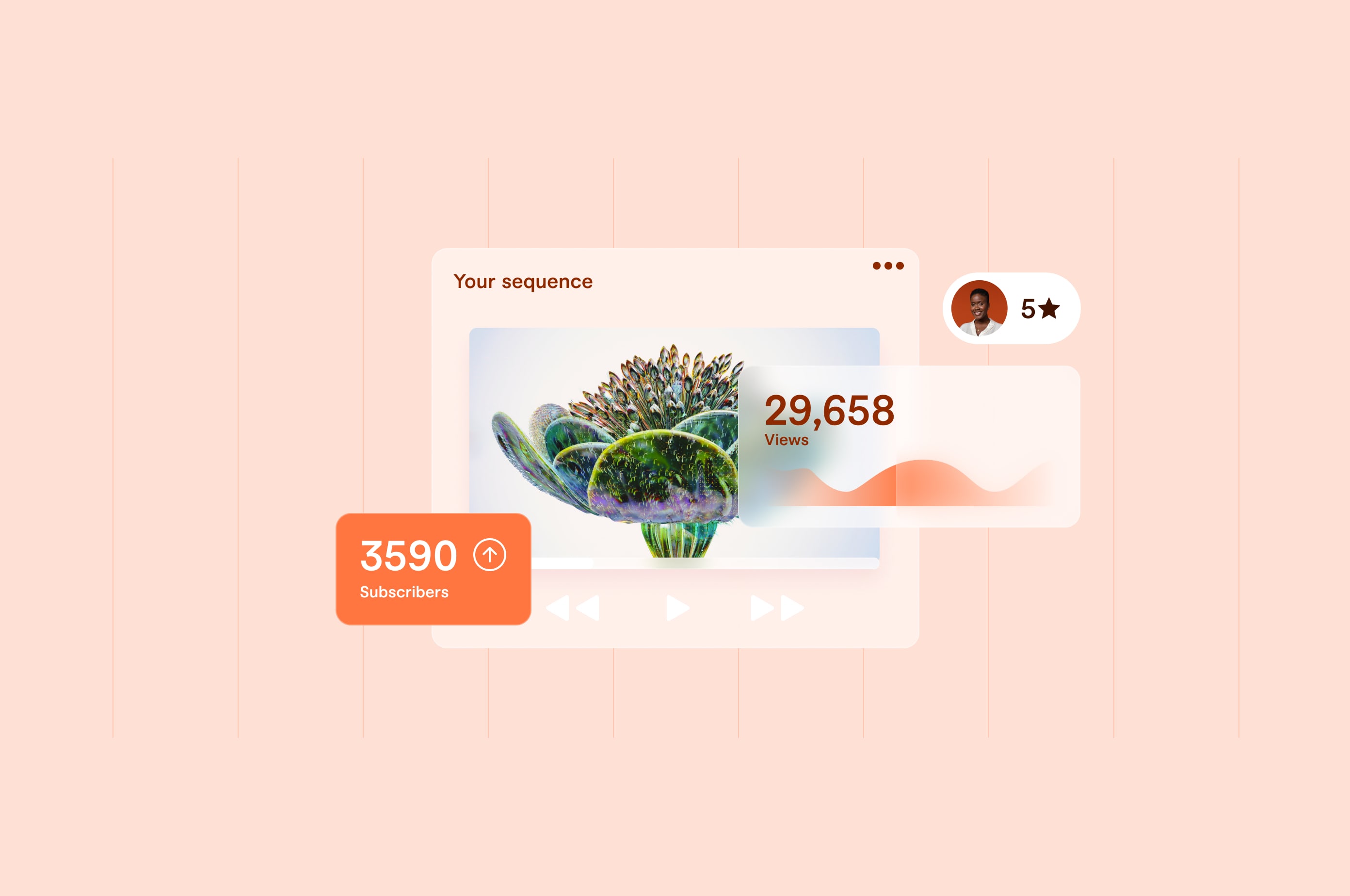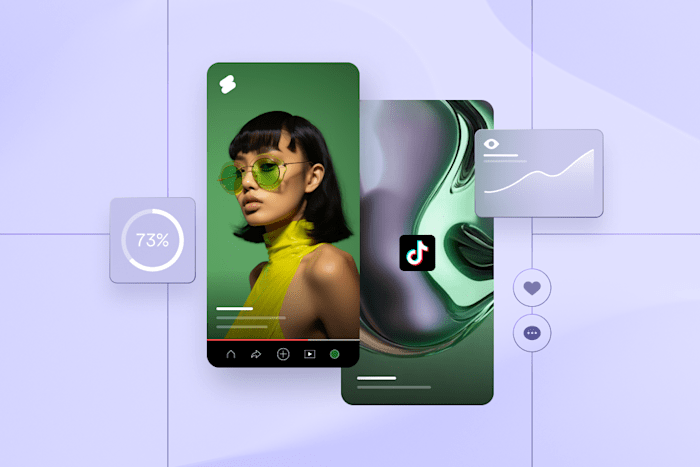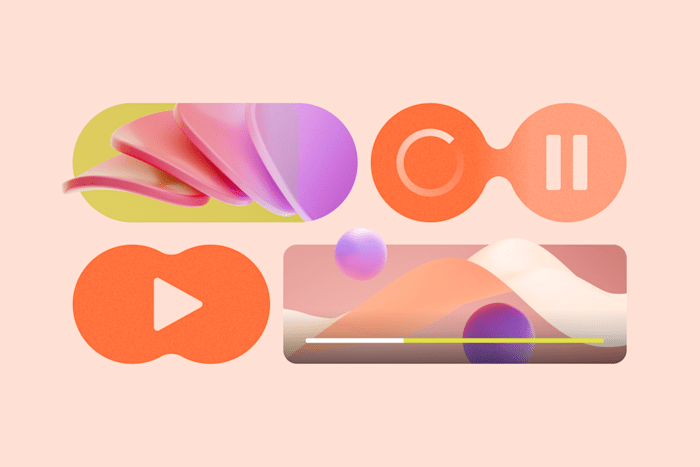YouTube Shorts Monetization: 9 Strategies to Earn Money
Learn nine effective ways to earn money from YouTube Shorts outside of ad revenue.
 May 6, 2025
May 6, 2025 9 minute reading
9 minute reading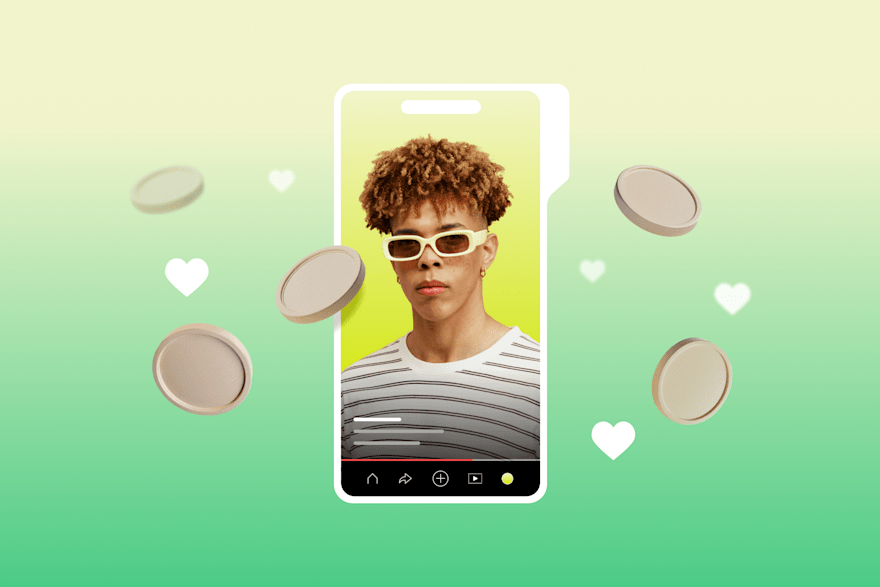
YouTube launched Shorts, its short-form social media videos feature, in 2020. According to YouTube's initial data, after launching Shorts, the average number of daily first-time creators more than doubled in the first year.
Since then, Shorts has become even more engaging than regular YouTube videos. For example, long-form videos get an average of 18.15 interactions while short-form content averages 37.44.
Starting February 1st, 2023, creators and businesses using YouTube started being able to earn money through the YouTube Partner Program with Shorts, under specific requirements.
This guide covers the basics of monetizing YouTube Shorts on YouTube. It also covers other methods, if you do not meet the YPP eligibility requirements (or want to diversify your income).
How to monetize YouTube Shorts on YouTube
Making YouTube Shorts offers creators another avenue for becoming YouTubers and businesses another channel for video marketing. How? Through YouTube monetization.
On YouTube, monetization happens when you meet criteria thresholds and join the YPP revenue sharing.
YouTube Partner Program (YPP) Revenue Share
Let’s take a look at those eligibility requirements for the YPP revenue sharing model:
You live in an eligible country.
1,000 subscribers.
4,000 valid public watch hours in the last 12 months OR 10 million valid public Shorts views in the past 90 days.
Comply with YouTube’s Community Guidelines and advertiser-friendly guides.
Other monetization features (like shopping and fan funding) require lower thresholds. Specifically, 500 subscribers and three valid public uploads. But we're focusing on revenue share here.
In YouTube Studio, check a box to be notified when your YouTube channel is eligible. You'll need to grow your channel with plenty of YouTube video ideas and top-notch video editing to keep viewers engaged.
Once you've become a member of the YPP, how does YouTube Shorts monetization work? Here’s an overview:
YouTube pools Shorts Feed ad revenue. Every month, YouTube adds together revenue from running ads in the Shorts Feed.
YouTube calculates the Creator Pool. YouTube allocates ad revenue in the Creator Pool (YouTube Shorts fund) based on views and music usage across Shorts on the platform. YouTube takes a cut of the overall ad revenue to cover music licensing.
Creator Pool allocation. YouTube distributes revenue to creators based on their share of total views from all monetizing creators in each country. If you generated 3% of total Shorts views (not watch time) by monetizing creators in your country, YouTube will allocate 3% of the revenue to you.
Revenue share application. You get to keep 45% of the revenue YouTube allocated to you from the Creator Pool—whether you use music in your Shorts or not.
In simpler terms, as a monetizing creator, your YouTube payout is 45% of the ad revenue you generate for YouTube, after music licensing costs.
YouTube Premium Revenue Sharing
YouTube Premium is the paid subscription for ad-free access and other perks. But if there are no ads, how do creators earn from Shorts views from these users?
It's pretty simple. YouTube pays 45% of the net revenue to monetizing creators. Like ad revenue sharing, YouTube takes a cut before allocating to cover music licensing. Then, YouTube allocates payment based on your share of subscription Shorts views in each country.
Drive traffic to long-form videos
If you also post long-form video content, you can use Shorts to improve your long-form video performance by driving extra traffic to them. You can do this by following these steps:
Open your YouTube Studio and find the Short video you want to link to a long video.
Click on "Details" with the pencil icon as you hover over the video description.
On the right panel, under the video preview, click on "Related video”:

YouTube
Your content library will open in a popup window. Select the long-form video you want to link to.
Save changes before exiting the video details screen.
After that, the linked video will appear under your channel name on the Short:

YouTube Shorts
It's not guaranteed, but users may click on the long-form video link to see your related content. This strategy can help boost your long-form video watch hours and your AdSense account/ad revenue share from regular videos.
Hire a YouTube expert on Fiverr
Other ways to monetize your YouTube Shorts
Let's say you are not eligible for the YPP—either because you're not in a participating country or do not meet the performance thresholds. Earning money through the YPP is not the only revenue stream for your Shorts videos.
You can monetize with other methods, such as:
Brand partnerships
Affiliate marketing
Selling merch
Fan funding
Selling Digital products/services
Speaking engagements
Most of these you can try even if you're a smaller creator or a business with a product/service.
Brand partnerships
Influencer marketing is huge. In 2025, the market size is roughly $32.55 billion worldwide. All sorts of brands pay to work with YouTube influencers who can introduce the brand to their audience.
You do not need a huge following to attract brand partnerships. If your channel caters to a specific niche—for example, gluten-free baking or tutorials for a specific game—you can attract related sponsors much more easily than a smaller channel trying to gain broad appeal.
For example, the channel lillabjornstationary only has 10.5k subscribers (in March 2025), but its niche makes it perfect for small stationary brands to partner with them.

YouTube Shorts
Affiliate marketing
One of the simplest early monetization methods on YouTube is affiliate marketing. To get started, you need to sign up with an affiliate network or a specific brand offering an affiliate program. Then, place those links in your videos (using video animation, for example) or the video description.
For this reason, affiliate marketing is also one of the quickest monetization setups for YouTube Shorts, since you can get started on day one. However, for the method to work, you'll need to offer a link to a product or service that viewers would value.
For example, the YouTube channel CommonCommand (Magic: The Gathering content), with only 49 videos and 1K followers in March 2025, is a TCG Player affiliate. TCG Player is a trading card game ecommerce site, popular within the MtG community.
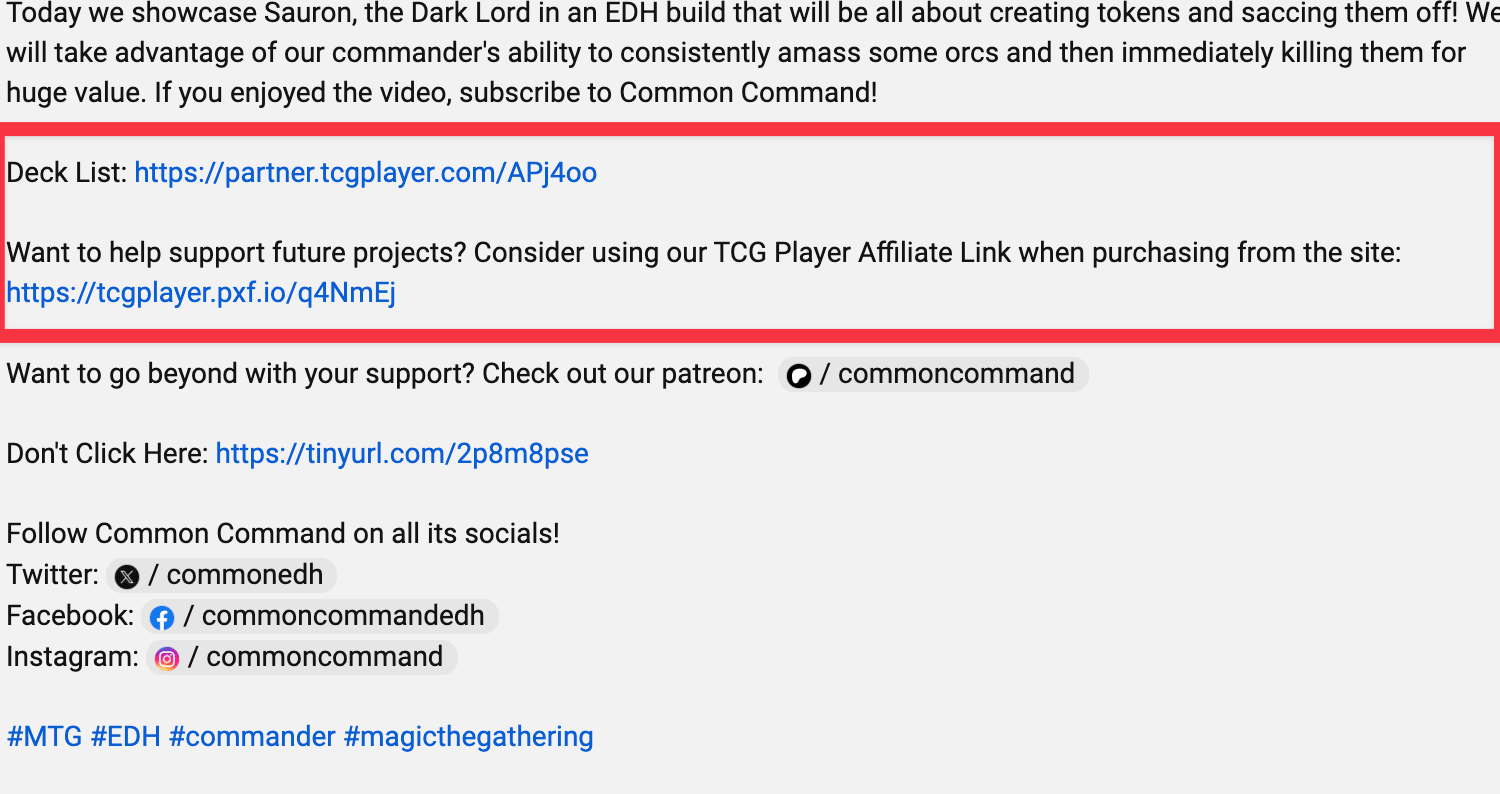
YouTube
Find an Affiliate Marketing Expert for Hire
Merch
In theory, you can make and sell merchandise on your Shorts from day one—if you have an external ecommerce store to host your products. But you'll likely want to sell merch when your channel has grown and you've built a loyal fanbase.
Merchandise design ideas happen organically as your channel develops and certain types of content or phrases become popular over time.
For example, Elizabeth from The Charismatic Voice uses YouTube's native Shopping feature to sell merch from her channel:

YouTube
Each of these merch options refers to content that has developed organically over time on her channel. As a result, merch can be a good channel to diversify income, but only if you've got people watching who will buy it.
Find a Professional Merchandise Designer for Hire
Fan funding
Another popular Shorts monetization method is fan funding—either through YouTube or third-party services. YouTube's native features offer channel Memberships to eligible channels with at least 500 subscribers and three public videos.
The Memberships option lets creators build a paid/premium community with access to exclusive content and identifiers in the comments section (like Super Thanks, Super Stickers, and Super Chat).
If you do not yet qualify for the lower-tier YPP, you can opt for platforms like Patreon or Ko-fi. These platforms are popular with Shorts creators like artists, musicians, knowledge-sharing, and lifestyle vloggers.
As an example, on the channel Spanish After Hours, the channel owner uses both the native YouTube Memberships feature (available on the lower-tier YPP) for fan funding, as well as Patreon and Ko-fi.
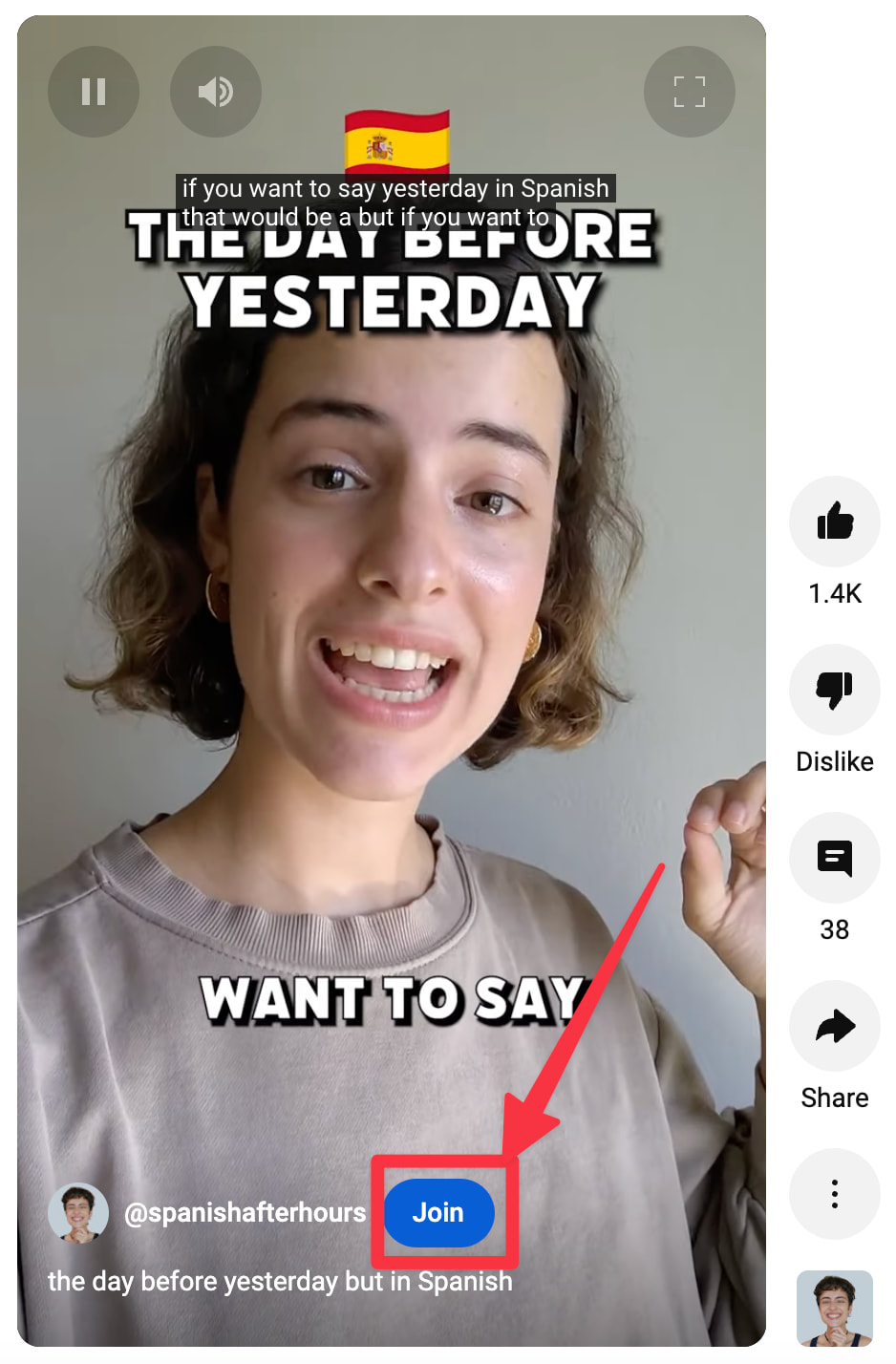
YouTube Shorts
The screenshot above shows the blue "Join" button for their channel membership options.
Digital products and services
If you have a digital-native business hoping to monetize Shorts, you can promote your digital products or services from your first video.
If you're a creator, you can still sell digital products and services—you'll just need to create them yourself first.
There are many options, but popular digital products include templates (planners, budgets, habit trackers), ebook guides, and photography/videography presets/LUTs.
On the other hand, you can also use Shorts to promote your services as a freelancer or video consultant, such as a filmed video producer or sound designer.
For example, Thomas Summers (an athletic coach focusing on baseball and softball) uses Shorts to promote his techniques and online coaching services. Additionally, plenty of YouTube content creators promote Notion-based templates and consultations, like Thomas Frank and Anna Lenkovska.
Speaking engagements
The last monetization method we'll cover is offering speaking engagements. Like merchandise, this method works best if you have a decent following to attract speaking engagement offers.
Looking for public speaking engagements also works best if your YouTube channel addresses a specific niche that typically requires lived experience, expertise, or formal training. For example, if your channel is focused on digital inbound marketing, you could apply to speak at related conferences.
For a real-life example, while her channel does not host the speaking engagement content, Jazzy Whipps, a deaf influencer with several well-performing Shorts, has engaged in deaf activism and cross-channel collaborations, such as LADbible.
How much can you really make with Shorts?
The earning potential of YouTube Shorts varies widely due to many factors, including:
Your channel and audience location. English-speaking creators tend to have a higher revenue-per-mille (RPM) on their videos. We looked at location-based CPM in our research on how much YouTubers make in 2025.
Your niche. Some niche content tends to attract higher-ticket advertisers for the YPP—personal finance, digital marketing, and tech reviews are good examples here.
The quality of your videos. If you post low-quality videos, it's quite unlikely that you will attract a high-quality audience or sponsorship interest. Investing in good video thumbnails to attract viewers, and a great video script to keep them there, makes a big difference.
The effort you put in. Plenty of folks give up on creating content consistently, which has a massive impact on earning potential.
Even with all that, relying on the YPP alone is unlikely to pay your bills. Compared to long-form videos, Shorts appear to have a much lower RPM on average.
For example, TubeBuddy published a video stating they made just $99.87 from a Short with 3.1 million views, which came to $0.03 RPM. Another creator, Jenson Tung (based in Canada), reported making only $86.77 from 31 million Shorts views.
With the low pay per number of views, Shorts ad-revenue sharing does not appear to be designed for generating significant income by itself. This is where using the other methods of monetization we discussed above comes in. Or, you can supplement Shorts by repurposing them on different platforms like TikTok or Instagram Reels.
Hire professional video experts on Fiverr
Whether you're a new YouTube Shorts creator or a veteran YouTuber looking to branch into the format, you can benefit from hiring expert help.
On Fiverr, you have access to thousands of freelance talents who can help you with various tasks related to your YouTube Shorts content production.
From video editing, video art, and script writing, to virtual assistants and automation builders, you can build a whole team to help make your high-quality video production dreams a reality.
Sign up and find expert video freelancers on Fiverr today.
Hire freelance experts for your next YouTube video
YouTube Shorts monetization FAQs
How much money are 1,000 views on a YouTube short?
The RPM of YouTube Shorts depends on several factors, including location, niche, and content quality. However, the average RPM seems to be between $0.03–$0.05, which means that 1,000 Shorts views pay between $0.03–$0.05.
Do YouTube Shorts get monetized?
Yes. The YouTube Partner Program (YPP) includes Shorts Feed ads in revenue-sharing.
How much do YouTube Shorts pay for 100,000 views?
If the average RPM of Shorts videos is $0.03, 100,000 views would pay $3. Several YouTube channels have reported making less than $100 for Shorts with millions of views.
Can you monetize YouTube Shorts without 1000 subscribers?
Yes. There are plenty of methods for monetizing YouTube Shorts without qualifying for the YouTube Partner Program, including:
Brand partnerships
Affiliate marketing
Selling merchandise
Fan funding
Selling digital products or services
Speaking engagements
